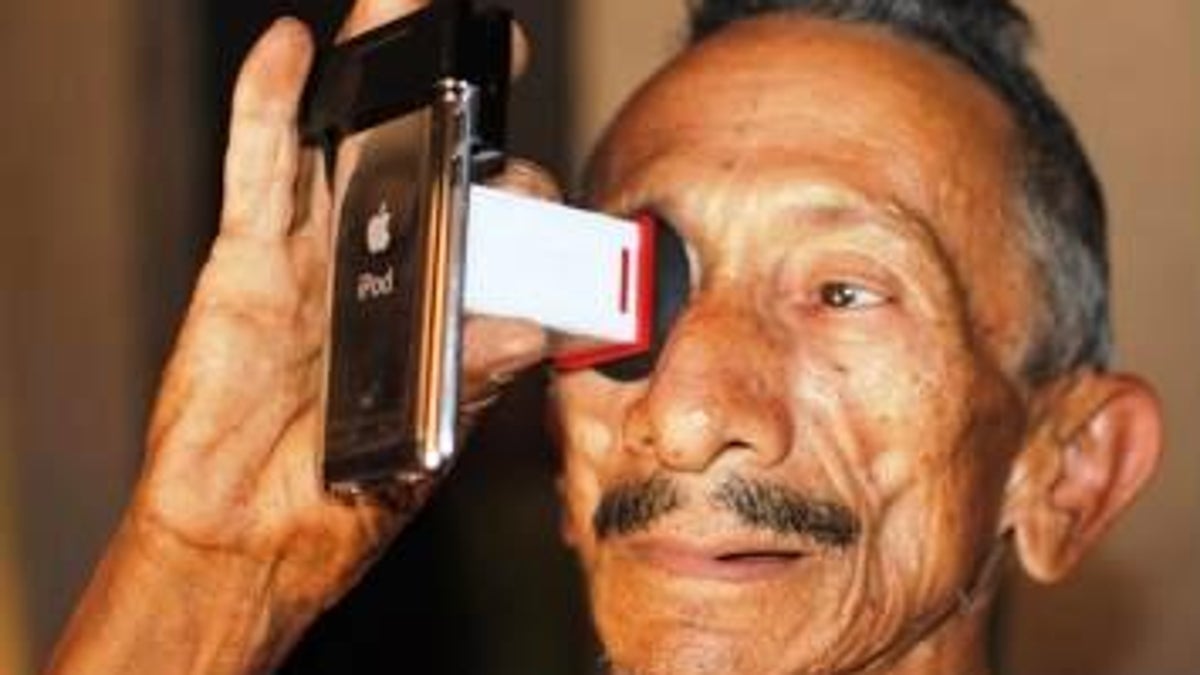MIT smartphone clip-on detects cataracts in minutes
Catra is a cheap clip-on eyepiece and software for smartphones that maps cloudiness in the eye lens like a radar. MIT researchers say it could help many people in developing countries.

Researchers at the Massachusetts Institute of Technology are working on an inexpensive way to use smartphones to quickly detect early-stage cataracts, the clouding of the eye lens that is the leading cause of blindness worldwide.
Developed by Media Lab Camera Culture group director Ramesh Raskar and colleagues, the Catra system is made of off-the-shelf components. Users peer through an eyepiece that slides onto a smartphone or other smart device like an iPod Touch, and they view lines displayed on the screen.
When the lines appear cloudy, the user presses a button. In that way, the device scans the lens of the eye to create a map of the cloudy areas, which are produced by proteins clumping together.
Identifying the position, size, shape, and density of the clouds, Catra can produce a diagnosis of cataracts in minutes. Check out the promo video below.
The idea is that Catra could be used in the developing world, where few have access to the expensive slit lamps and clinicians used to diagnose the disorder. That could lead to earlier detection of cataracts and better treatment results following surgery.
Catra has been tested on 22 people, and it found one case of cataracts that had been undiagnosed, despite an eye test at a doctor's office a few months prior, according to MIT.
The research follows the team's work on NETRA, a smartphone eye test for prescriptions that is low-cost and quick. Catra will be presented next month at Siggraph in Vancouver.

